How do I transform this expression NOT(a) OR NOT(b) AND NOT(c) using only NAND gates?? I was trying to do it, but I don't find the correct answer.
- 824
- 2
- 14
- 36
- 1
- 4
-
2What did you try? Where *specifically* are you stuck? – Eric J. Oct 21 '15 at 22:01
-
Im trying to do demorgan but I don't achieve a result – Predateur 24 Oct 21 '15 at 22:13
-
is this a programming problem or a circuit design problem? – Claies Oct 21 '15 at 22:17
-
You need some parentheses in the expression above, otherwise it's ambiguous. – Paul R Nov 13 '15 at 15:32
3 Answers
Firstly, all logic equations can be represented by NAND gates. Consider a NOT.... Just tie the two inputs of a NAND together and you have a NOT! A NOT NAND is an AND and an OR is two NOT gates driving a NAND! It is all quite cool... Do a bit of research on mathematical logic and you should find details of various conversion techniques.
- 2,255
- 4
- 32
- 55
-
-
-
2@Predateur24 "Give me the answer pls." is ***definitely not*** going to get people to do your work for you. Besides the fact that this isn't even a question on topic for this site anyway..... – Claies Oct 21 '15 at 22:49
You can apply following formulas step by step:
NOT(A) OR NOT(B) = A NAND B
A AND B = NOT(A NAND B)
NOT(A) = A NAND A
- 3,652
- 3
- 22
- 27
I would suggest using the Rott's grids. It is a graphical application of De Morgan's laws and it is useful for optimizing the design using only combinations of NOR and NAND gates. Usually it can be done really quickly without worrying about making a mistake.
Every Rott's grid is created according to these three principles:
- the De Morgan's laws are respected by switching between the ⋅ (the conjunction) and the + (the disjunction) and dividing them with the horizontal lines (negations),
- the vertical lines separate the individual inputs, changing the number of logic gates' inputs,
- on the last line are placed the input variables either in their prime or negated form – that is determined individually by the number of horizontal lines above them (the initial ¬ also counts).
This is the given expression in a matching Rott's grid:
f = ¬a + ¬b ⋅ ¬c
--------------
⋅ +
| --------
| ⋅
| |
a | ¬b | ¬c
As you can see, the original expression was transformed to an equivalent, that is using only two 2-input NAND gates (and some inverters, that can be replaced also by NAND gates). The grid is just a graphical representation of applying the De Morgan's laws on the original expression:
f = (¬a + (¬b ⋅ ¬c))
= ¬(¬(¬a + (¬b ⋅ ¬c))) //double negation law: ¬(¬x) = x
= ¬(¬¬a ⋅ ¬(¬b ⋅ ¬c)) //De Morgan's law
= ¬(a ⋅ ¬(¬b ⋅ ¬c)) //double negation law: ¬¬a = a
f = nand(a, nand(not(b), not(c)))
(The .gif picture was generated using an online latex tool)
- 824
- 2
- 14
- 36
